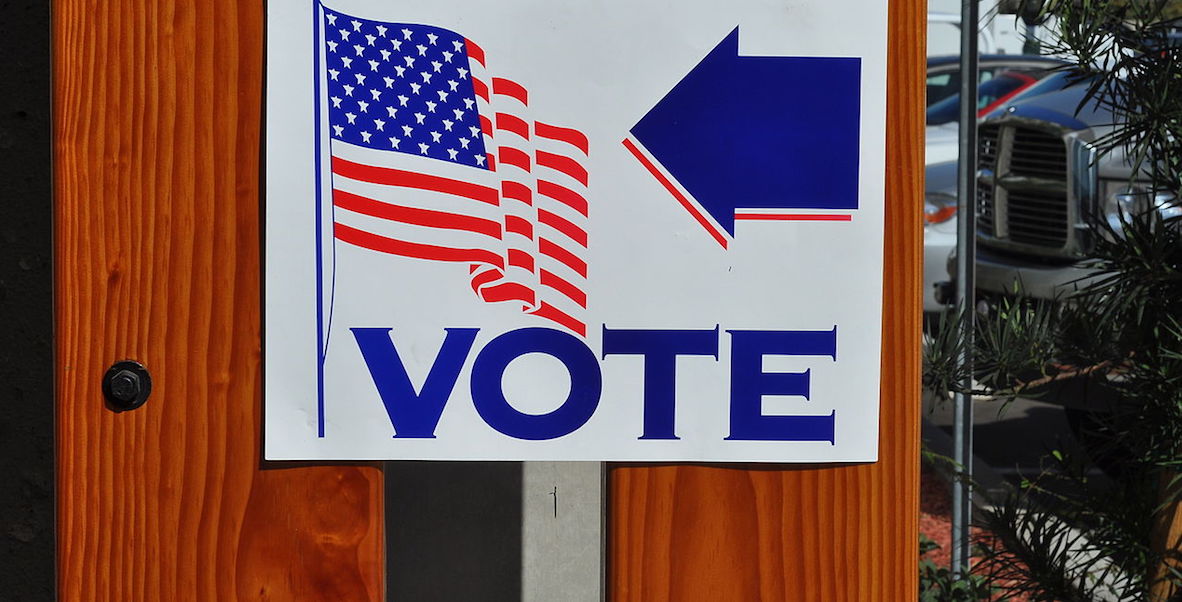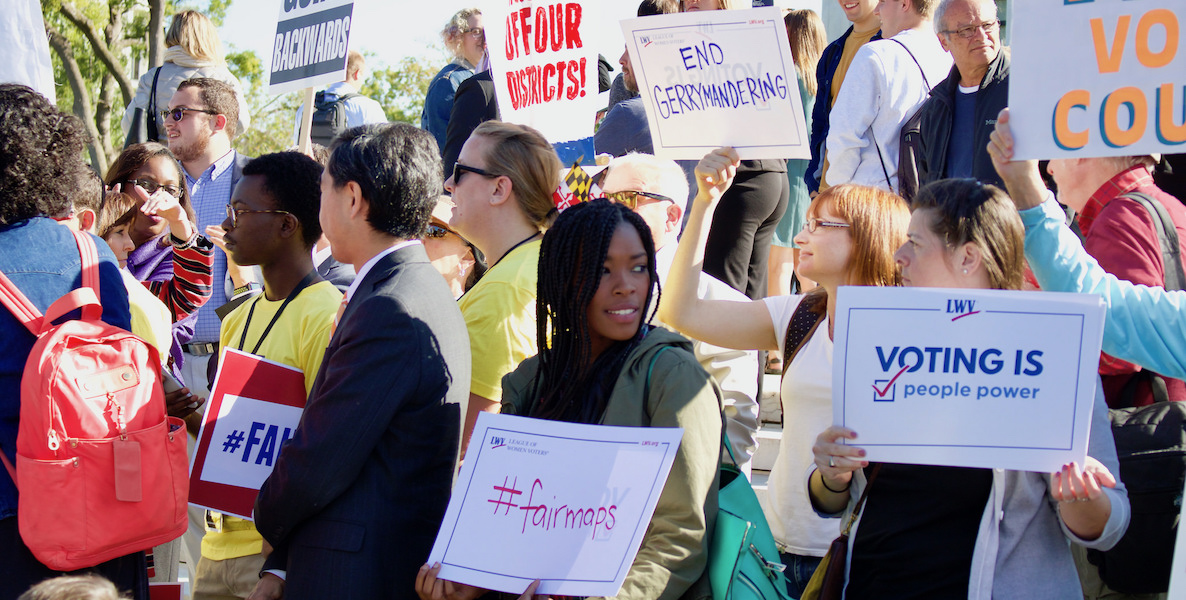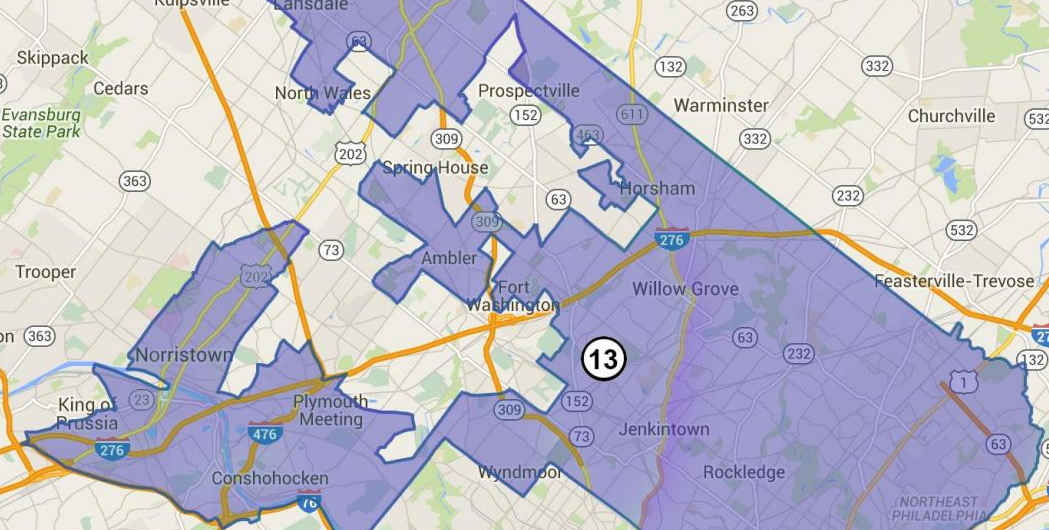The state Supreme Court begins listening to oral arguments today in the state’s biggest gerrymandering case in years. The seven judges could require the districts redrawn, or leave them as they are, keeping a Republican advantage.
Few officials doubt Pennsylvania’s districts are gerrymandered along partisan lines. That’s hardly an issue. The Supreme Court’s decision hinges mostly on whether they believe the districts were manipulated with severe enough partisanship to violate the state constitution or necessitate amending the state constitution.
A decision by a federal court in North Carolina last week ordering the state to redraw its district lines could suggest what will happen here. But nothing in the history of gerrymandering—even the term itself—is simple.
Here, a primer on how we got into this mess—and how we might get out of it
How did Pennsylvania become so very gerrymandered?
Congressional districts are redrawn every 10 years, after a new census, so the current electoral map dates back to 2011. State law allows the legislature to draw the maps, giving the Governor veto power. After the 2010 statewide elections led to Republicans taking control of the Governor’s office and the state House and Senate, conservatives went wild with redistricting.
They carved up counties and cities to best give Republicans majorities and dilute the power of Democratic voters. Pennsylvania became what experts consider the third-most gerrymandered state in the U.S.
The next census is in 2020, when the state will have another opportunity to draw About GerrymanderingRead More
What’s this lawsuit all about?
The Public Interest Law Center filed a lawsuit last year on behalf of the League of Women voters and various other state residents. The case argues that the current map violates the state Constitution’s “freedom of expression” provision, and its rule that lines should not divide county or local jurisdictions “unless absolutely necessary.”
In November, the plaintiffs won a “King’s Bench” ruling, meaning the case would bypass the lower courts and head directly to the state Supreme Court, giving an opportunity for a decision before the 2018 spring primary. But first the case went in front of Commonwealth Court Judge Kevin Brobson. The Supreme Court ordered him to hold a hearing and release a conclusion.
Getting gerrymandering bills passed has taken on new urgency since the 2016 election. It would be the only lasting solution to unfair gerrymandering—and no court would have to decide when partisan becomes too partisan in Pennsylvania.
Last month, Brobson decided that the 2011 redistricting had been influenced by partisanship—but not enough to violate the state constitution. “The question is how much partisan bias is too much,” Brobson wrote. “Petitioners have failed to meet their burden…This should be the end of the inquiry.”
Brobson’s not alone among his judicial peers in being conflicted on how to react to partisan gerrymandering. Though a large majority of Americans, regardless of political affiliation, want to limit partisan lawmakers’ abilities to draw districts, courts have faced difficulties deciding the threshold for when partisan gerrymandering gets too partisan. They haven’t defined when the line’s been crossed or even ruled that any line has been crossed.
“He thought there was a problem,” says Michael Li, who focuses on gerrymandering in his work as senior counsel for the Brennan Center’s Democracy Program at New York University. “He felt a little bit his hands were tied.”
What happened in North Carolina?
In a similar case, a panel of three federal judges ruled that state’s districts needed to be redrawn because the current ones were assembled with “invidious partisan intent.” The decision by the panel of judges marked the first time a federal court ordered congressional districts redrawn because of an unconstitutional partisan gerrymander.
How does that relate to Pennsylvania?
The cases are different in that North Carolina’s is federal and Pennsylvania’s is a state claim. But the petitioners in North Carolina were making essentially the same argument—that legislators had violated the Equal Protection clause of the Constitution. The only difference here is that the petitioners are claiming a denial of Equal Protection through partisan gerrymandering is a violation of the Pennsylvania Constitution instead of the U.S. Constitution.
To The Gerrymandering Project PodcastListen
“The North Carolina case does a good job of communicating the constitutional standard and that certainly could be a thoughtful opinion on how to do that,” Li said. “It certainly could be persuasive to the Supreme Court of Pennsylvania.”
How is the Pa. Supreme Court likely to rule?
The majority of the state Supreme Court differs from Brobson, an elected Republican, in political makeup. Because of a blue wave in the 2015 judicial elections, when a number of scandals and retirements left several seats available, Democrats hold a 5-2 advantage on Pennsylvania’s highest court. They’ve already used their power in a way that overhauled the Environmental Rights part of the Pennsylvania Constitution and set up a trial that could change state school funding.
The political makeup and previous actions of this court indicate they are inclined to side with the League of Women Voters and conceivably overturning Pennsylvania’s district boundaries.
If they do, the question is how and when new districts will happen. The court here could do what the North Carolina federal judges did and force legislators to draw a new map—within two weeks—that the judges deem fair. The Court could also appoint a “special master,” an independent source who would use computer models to redraw maps.
Are there other legal avenues to redistricting in PA?
Two other lawsuits, both federal, have been making their way through the court system. Agre v. Wolf, brought forward by local ward leader Louis Agre, was rejected by a federal court panel last week.
The other federal suit, Diamond v. Torres, bears resemblance to the North Carolina case and the state Supreme Court case, arguing the Equal Protections clause and First Amendment were violated by Pennsylvania’s Republican-influenced gerrymandering. A group of residents filed the suit in November and have sought an expedited trial. But the opposing sides are still lobbing motions back and forth.
Would a Supreme Court ruling for the plaintiffs fix partisan gerrymandering for good?
Carol Kuniholm, chair and co-founder of Fair DistrictsPA, warns that a ruling by Take Action For Fair DistrictsDo Something
“We would say this is an important remedy and we would love to see it happen,” Kuniholm says. “But it’s not a long term solution.”
Instead, her group has pushed for fair districts through proposed legislation, including two bills that have been introduced to the House and the Senate that would take redistricting duties away from legislators and give it to an independent, bipartisan commission, similar to how California does it. The process would also require opportunity for public feedback.
Getting those bills passed has taken on new urgency since the 2016 election, when the issue of gerrymandering has suddenly become a hot topic. And it’s not at all guaranteed to happen. But it would be the only lasting solution to unfair gerrymandering—and no court would have to decide when partisan becomes too partisan in Pennsylvania.
woodleywonderworks via Flickr






